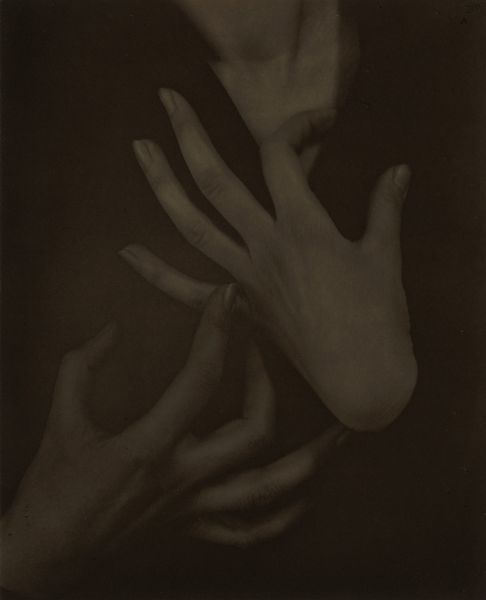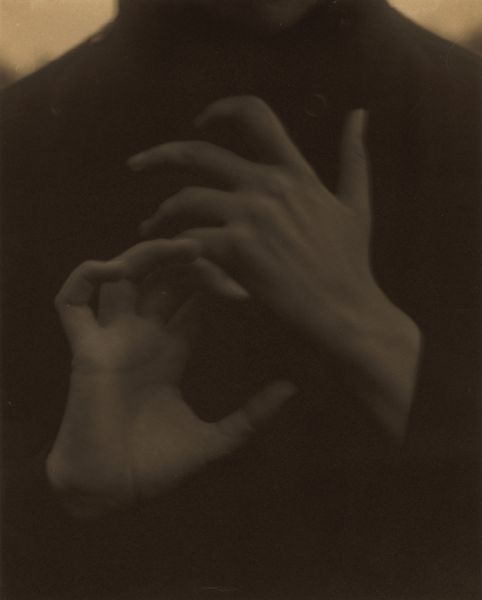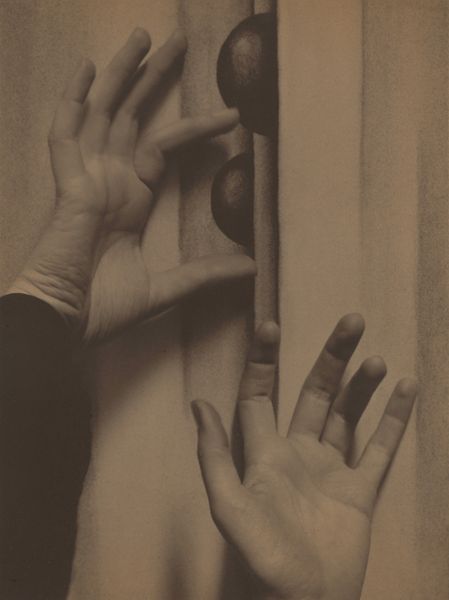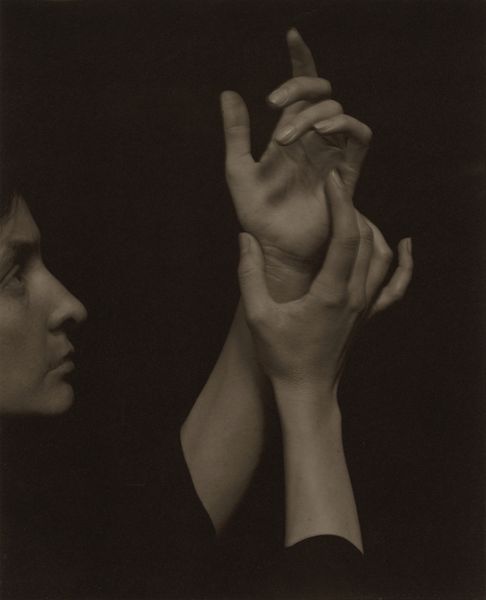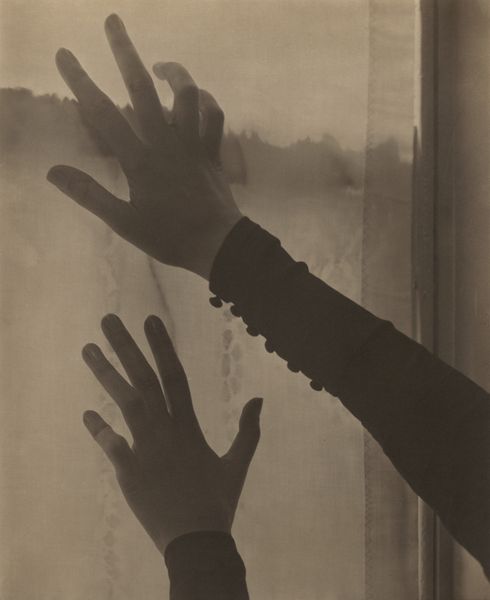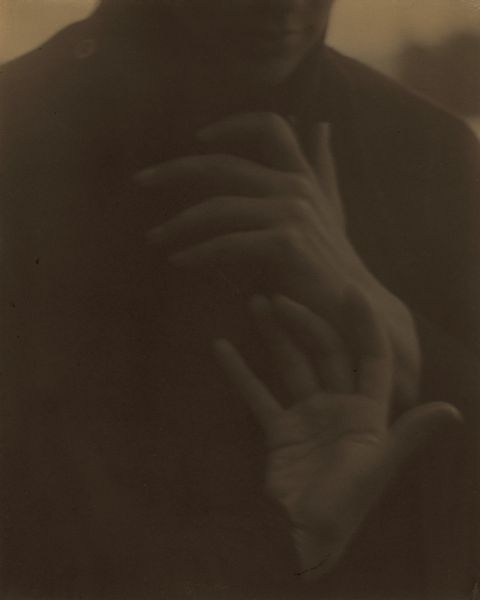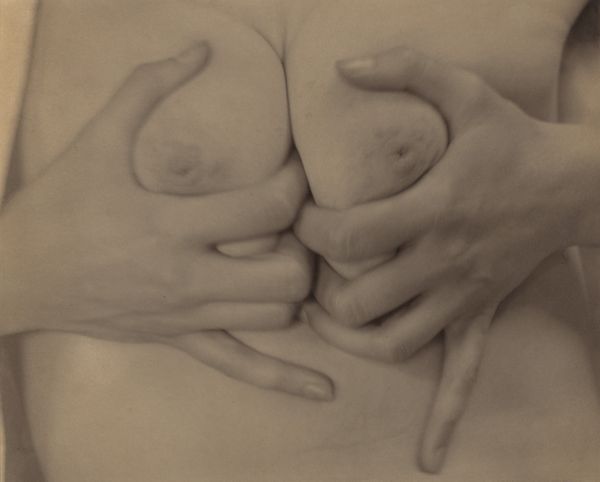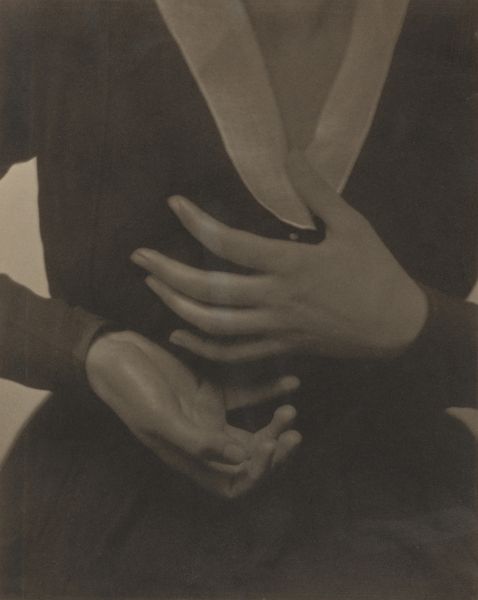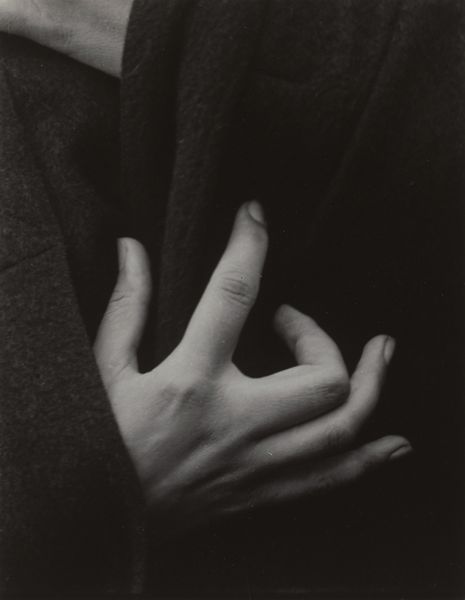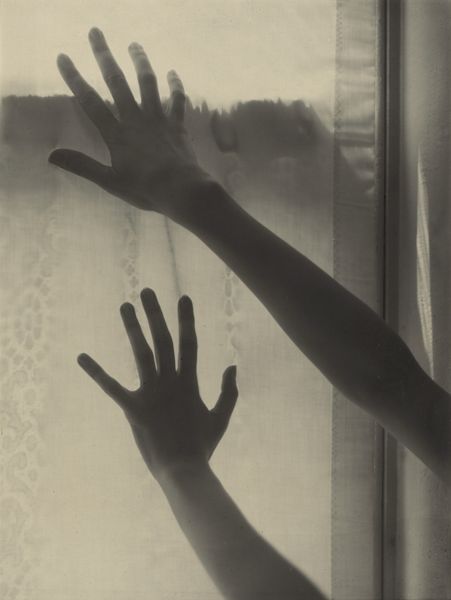
photography
#
portrait
#
pictorialism
#
photography
#
symbolism
Dimensions: image: 23.2 x 18.2 cm (9 1/8 x 7 3/16 in.) sheet: 24.7 x 20.4 cm (9 3/4 x 8 1/16 in.) mat: 50.8 x 38.2 cm (20 x 15 1/16 in.)
Copyright: National Gallery of Art: CC0 1.0
Editor: Here we have Alfred Stieglitz’s photograph, "Georgia O'Keeffe—Hands," created between 1919 and 1920. It's strikingly simple—just a close-up of hands against a dark background. There’s something very vulnerable and exposed about it, even ethereal. What do you see in this piece, looking at it from a curatorial lens? Curator: What strikes me is how Stieglitz's work participates in the making of O'Keeffe as an artistic persona. Hands become synecdoche. Think about the power dynamics inherent in the artistic relationship: Stieglitz, the established male photographer, capturing O’Keeffe, the emerging female artist. Consider, too, how he chose to portray her - not just the famous floral abstractions, but also her body, her hands specifically. Editor: So, you’re saying there’s a loaded gaze at play here? Curator: Precisely. And beyond the gaze, think about agency. How much control did O’Keeffe have over these images? Were they collaborative portraits, or was Stieglitz crafting a particular narrative about her identity as an artist, as a woman? Consider how that narrative might intersect with societal expectations of women in the early 20th century. Editor: That reframes the photograph for me. It’s not just a portrait, but almost a construction of identity through a gendered lens. It makes me wonder, too, about the absence of O’Keeffe’s face. Curator: Exactly! That absence speaks volumes. Where does the individual end and the objectification begin? This photograph challenges us to question the roles of artist, muse, and the inherent power structures in the art world and society. Editor: This conversation has definitely complicated and enriched my initial impression. It makes me want to dig deeper into their relationship. Curator: Absolutely. Thinking critically about the social and historical context gives us a richer appreciation of even seemingly simple artworks.
Comments
No comments
Be the first to comment and join the conversation on the ultimate creative platform.
